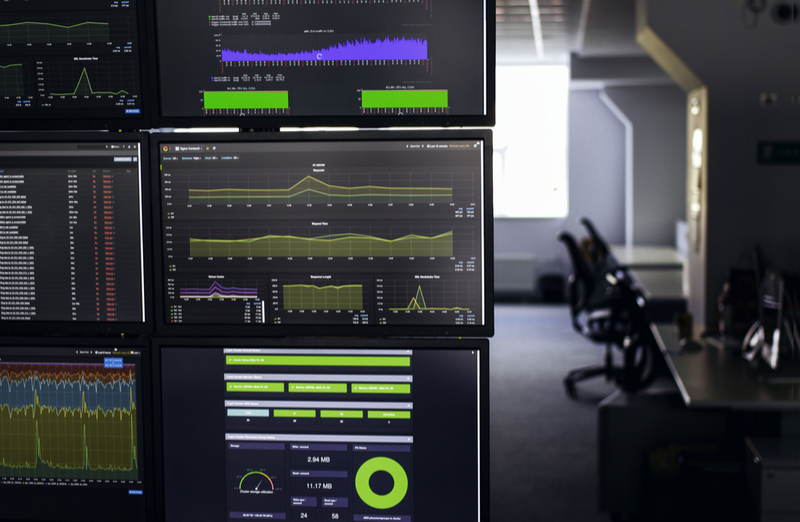
With the advent of technology, servers have become the backbone of the majority of businesses across the world. Their private intranets have grown from small networks into a large global infrastructure. Eventually, the need to manage the huge number of hardware and software components within these networks has become indispensable. Network administrators face many challenges in monitoring, managing and controlling the communicating entities. The ultimate objective of server and network management is to maintain reliability and performance to keep up with the business requirements. We will explore and learn how organizations keep their servers up and running at optimal efficiency twenty-four hours a day.
We are well aware that a network consists of hardware and software. Routers, servers and other devices comprise the physical components of the network and software protocols are the tools that control and coordinate these devices. It is not surprising that with thousands of components, a network will occasionally malfunction which can even break entire business operations. Therefore, it is the job of a network administrator to control and manage the interacting components of a complex system.
Key Requirements That a Network Management System Should Satisfy
5 areas of network management defined by the International Organization for Standardization (ISO)are:
- Fault management: Includes detection, isolation, and restoration of failed components. Care must be taken to ensure that every single component is working in perfect order.
- Accounting management: Accounting management allows the network manager software to specify and control user and device access to network resources. Though this is not applicable to all the companies, in many organizations, IT department and individual user accounts are charged for the use of network services.
- Configuration management: Concerned with initializing a network, monitoring system configuration information and adding and updating the interacting components.
- Performance management: Monitoring the performance of the communicating entities to ensure the efficiency of the current network
- Security management: Tasks associated with network and server security that includes user authentication, encryption, and intrusion detection to reduce the risks of data breaches.
Challenges
In the earlier days of networking, if someone encountered any problem, he would run a few pings to detect the source and change the system settings accordingly. But with the plethora of servers and networking devices in modern times, monitoring and managing them is a hard-won task. The following points highlight the challenges faced by organizations in maintaining their servers:
- Distributed device management: The increasing number of users and devices demand dispersed servers and data centers across multiple locations. Devising a right strategy for managing devices to ensure network visibility and increased productivity is crucial for organizations.
- Network Security: Data present on servers is a very important asset for any company. With the increasing security breaches leaving any part of the network vulnerable can cost a fortune. IT administrators have to constantly monitor the systems for intrusion, detection and splurge demand of resources to prevent denial of service attacks.
- Natural Disasters: You may prevent a data breach but you cannot stop a natural calamity from damaging the network equipment. With thousands of dollars being lost each day because of network failure, it is essential to devise an efficient backup and recovery strategies to minimize downtime.
- Maintaining efficiency: With every operation counting on the server, maintaining server efficiency is the priority for organizations. Memory leaks, incompatible applications, fragmented drives, poor data compression and at worst disk failure on the server can stop the entire working of the organization.
- Monitoring Compliance: With the increased security breaches and improper use of IT, a company has to comply with government policies. Like, an organization working with public health information has to satisfy HIPAA compliance that defines rules for storing and transiting patient data. Constant monitoring is required to safeguard compliance requirements in the company’s operations.
Server and Network Management Best Practices for Organizations:
- Mount your servers properly and keep wiring neatly arranged.
- Have a process or system for tracking users and devices.
- Develop strict protocols for employees from accessing sensitive data which can have devastating effects if leaked.
- Invest in IT consultancy services to assess your current networking infrastructure and working practices. IT experts will diagnose your systems for potential vulnerabilities and provide you with the latest security tools.
- Ensure that all the software installed on the server is updated regularly.
- Document the operations so that the non-IT staff can understand its proper usage.
- Use automation tools wherever possible to minimize your efforts in controlling the system.
- Use network intrusion detection system (NIDS) that can be deployed on your network to constantly monitor the traffic and detect suspicious behavior.
- Take regular backups and test the recovery process from time to time.
- Ensure application and network visibility across the IT infrastructure.
Conclusion
Servers, routers and other network components have become the central nervous system of organizations. It is essential to maximize uptime and minimize disruption due to neglected maintenance. This includes the deployment, integration, and coordination of the hardware and software components. Server and network management system is about monitoring, testing, configuring, evaluating and controlling the network and element resources to meet the operational performance and quality of service requirements at a reasonable cost.
Contact us today to learn about Bleuwire™ services and solutions in how we can help your business.





